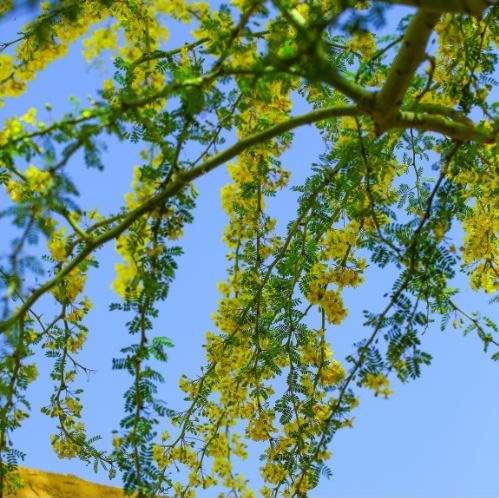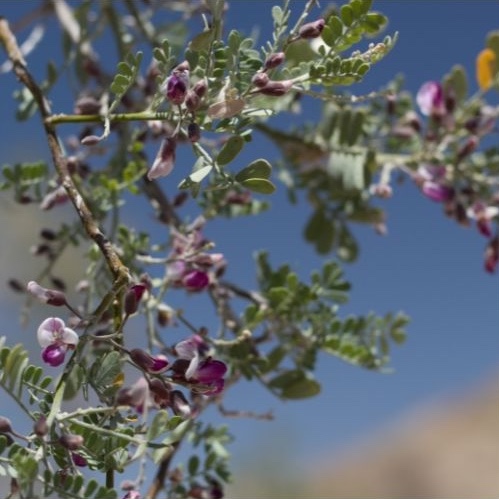Pruning is essential for maintaining the health and longevity of native trees in Tucson, AZ. The city’s desert climate, characterized by extreme heat, limited rainfall, and seasonal monsoons, requires careful consideration when it comes to tree care. Native species like mesquite, palo verde, ironwood, and desert willow are adapted to the harsh environment, but they still benefit from regular pruning to improve their structure, promote growth, and prevent damage.
This guide covers everything you need to know about pruning native trees in Tucson, including the right techniques, timing, and tools.
Understanding Tucson’s Native Trees
The native trees of Tucson have evolved to thrive in arid conditions, making them uniquely suited to the region. Some of the most common native species include:
- Mesquite Trees (Prosopis spp.): Known for their rapid growth and wide canopies, mesquite trees provide valuable shade but can become overgrown and unruly without regular pruning.
- Palo Verde Trees (Parkinsonia spp.): Famous for their green bark and yellow flowers, these trees have a multi-trunked form and can develop dense canopies that require careful management to prevent storm damage.
- Ironwood Trees (Olneya tesota): Slow-growing and long-lived, ironwood trees are hardy but need minimal pruning, primarily to remove deadwood and maintain structure.
- Desert Willow (Chilopsis linearis): Valued for their ornamental beauty and flowering habit, desert willows need light pruning to encourage blooming and maintain their shape.
Each of these species has unique growth habits and pruning requirements, and understanding their natural forms will help you apply the right pruning techniques.

Why Pruning is Essential in Tucson’s Climate
Tucson’s native trees face specific challenges due to the region’s climate, making pruning an essential part of tree care:
- Health and Growth: Pruning removes dead, damaged, or diseased branches, which can harbor pests or promote decay. It also encourages healthy new growth and helps distribute the tree’s resources more efficiently.
- Structural Integrity: Strong winds, especially during monsoon season, can break weak or overgrown branches. Pruning helps trees develop a strong, balanced structure, reducing the risk of storm damage.
- Water Efficiency: In Tucson’s arid environment, trees must use water efficiently. Overgrown branches increase a tree’s water demands. Pruning helps the tree conserve water by reducing the amount of foliage it needs to sustain.
- Safety and Aesthetics: Overgrown branches can pose a safety hazard by interfering with power lines, buildings, or walkways. Pruning keeps trees looking tidy and reduces the risk of property damage.
Improper pruning, however, can do more harm than good. Over-pruning or using the wrong techniques can lead to sunscald, insect infestations, and overall stress on the tree, particularly in the harsh desert sun.
Best Time to Prune in Tucson
The timing of pruning is crucial for the health of native trees. In Tucson’s desert climate, pruning at the wrong time can stress the tree or leave it vulnerable to pests or disease.
- Late Winter to Early Spring (February – April): This is the best time to perform major pruning on most native trees. The cooler temperatures reduce water stress, and trees are generally dormant or growing slowly, allowing them to recover from pruning before the hot summer.
- Avoid Pruning in Summer: Summer, particularly during the peak heat (June to August), is not an ideal time for pruning. The intense sun and high temperatures can lead to sunscald and increased water loss.
- Light Pruning in Fall: Light trimming or the removal of deadwood can be done in the fall, but major pruning should be avoided to prevent over-stressing the tree as it prepares for dormancy.
Different species may have slight variations in timing:
- Mesquite Trees: These fast-growing trees recover well from pruning in late winter or early spring.
- Ironwood Trees: As slow growers, they should be pruned minimally, with only dead or damaged branches removed in the fall.

Tools and Equipment for Pruning Native Trees
Using the right tools for pruning is essential to make clean cuts and avoid damaging the tree. Here are the recommended tools for pruning native trees in Tucson:
- Pruning Shears: Best for cutting small branches up to about ½ inch in diameter. Choose high-quality shears with sharp blades for clean cuts.
- Loppers: These are useful for branches up to 1½ inches in diameter and allow you to reach higher branches with more leverage.
- Pruning Saws: For branches thicker than 1½ inches, a pruning saw is necessary. These saws are designed to make smoother cuts than regular saws.
- Pole Pruners: Used to reach high branches without needing a ladder, essential for large trees like mesquite and palo verde.
- Gloves and Safety Gear: Pruning thorny trees like mesquite or palo verde can be hazardous, so wearing gloves and eye protection is recommended.
Make sure to disinfect tools between uses with a bleach solution (1 part bleach to 9 parts water) to prevent the spread of disease.
Techniques for Pruning Native Trees
Proper pruning techniques are key to promoting healthy growth and maintaining the natural form of Tucson’s native trees. Each species has specific pruning needs, but these general guidelines apply to all trees:
General Pruning Guidelines
- Cut Just Outside the Branch Collar: The branch collar is the swollen area where a branch meets the trunk. Cutting here promotes proper healing. Avoid flush cuts (cutting too close to the trunk) or leaving stubs, which can lead to decay and disease.
- Angle Your Cuts: Make cuts at a 45-degree angle to prevent water from pooling on the cut surface and promote faster healing.
- Remove Dead or Diseased Branches First: Start by removing any dead, diseased, or damaged branches to prevent the spread of pests and disease.
- Thin, Don’t Top: Topping (cutting off the top of the tree) is harmful to native species. It leads to weak regrowth and increases vulnerability to pests and diseases. Instead, thin out branches to reduce the canopy’s weight and improve air circulation.
Species-Specific Pruning Techniques
- Mesquite Trees:
- Thin the canopy to improve air circulation and reduce the risk of storm damage.
- Avoid removing more than 25-30% of the canopy at a time, as mesquite trees can experience shock from over-pruning.
- Trim lower branches for clearance, especially in areas near buildings or pathways.
- Palo Verde Trees:
- Remove weak or narrow-angled branches to prevent breakage during high winds.
- Thin the canopy to allow light and air to penetrate, focusing on interior branches.
- Prune to maintain the natural multi-trunked form, avoiding over-pruning.
- Ironwood Trees:
- Prune sparingly, as ironwood trees grow slowly.
- Focus on deadwood removal and maintaining a balanced structure.
- Avoid pruning healthy branches unless absolutely necessary, as the tree takes time to recover.
- Desert Willow:
- Prune lightly to encourage blooming and remove any errant branches.
- Remove crossing branches that may cause damage as they rub together.
- Light shaping may be needed to maintain the tree’s ornamental appearance.

Common Mistakes to Avoid
While pruning is important, improper techniques can be damaging to native trees. Avoid these common mistakes:
- Over-Pruning: Removing too much foliage at once can stress the tree, leading to reduced photosynthesis and water stress. Native trees in Tucson are adapted to the desert climate and need their canopies for protection.
- Topping: Topping is a harmful practice where the upper portion of the tree is removed. This leads to weak, spindly regrowth and opens the tree up to disease.
- Incorrect Cutting: Making flush cuts (too close to the trunk) or leaving stubs (too far out) can prevent proper healing, leading to decay.
- Pruning in Summer: Pruning during Tucson’s hottest months can lead to sunburn and stress, as the tree is already under pressure from the heat.
Caring for Trees After Pruning
After pruning, it’s essential to care for your trees to help them recover and thrive:
- Watering: Native trees generally require little water, but after pruning, they may need extra hydration to reduce stress. Deep watering after pruning helps promote recovery.
- Monitoring for Stress: Keep an eye on your trees for signs of stress after pruning, such as yellowing leaves or slow growth. Adjust watering or provide temporary shade if needed.
- Pest Prevention: Pruned trees are more vulnerable to pests. Inspect regularly for signs of insect infestation, particularly during monsoon season, and treat promptly if needed.
Pruning native trees in Tucson requires a thoughtful approach that considers the species, climate, and the tree’s natural growth patterns. By following the proper techniques and timing, you can ensure your trees remain healthy, beautiful, and resilient against the challenges of the desert environment. Always remember that less is more when it comes to pruning, especially in Tucson’s extreme climate, and that good pruning practices will promote long-term tree health and vitality.